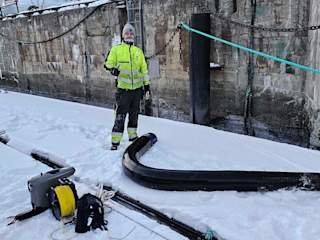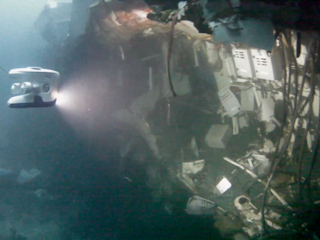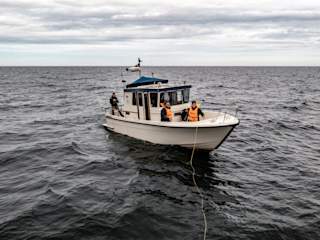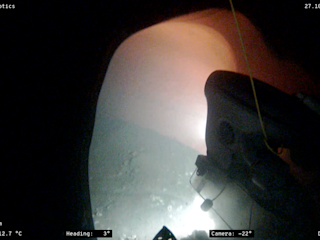ROVs for search, rescue and recovery
When the water visibility is low, it can be challenging for rescuers to find objects and assess how safe the area is, increasing the risk for the divers. For missions requiring divers to pick up items, using an ROV to document the environment underwater beforehand will help in planning their mission more in detail, saving time and reducing risk to human life.
Usually, these missions are carried out by professionals like the police, firefighters, or other organisations that do SAR (Search and Rescue) work. Their goal is to locate and recover missing persons, evidence or any other objects related to investigations like weapons or contraband. That’s where ROVs come into the picture. By integrating a sonar to the Blueye X3, you will be able to map the seabed and to get a fair picture of the visual range for the rescue operation. For example, we could establish the impact of blast on Nord Stream pipes.
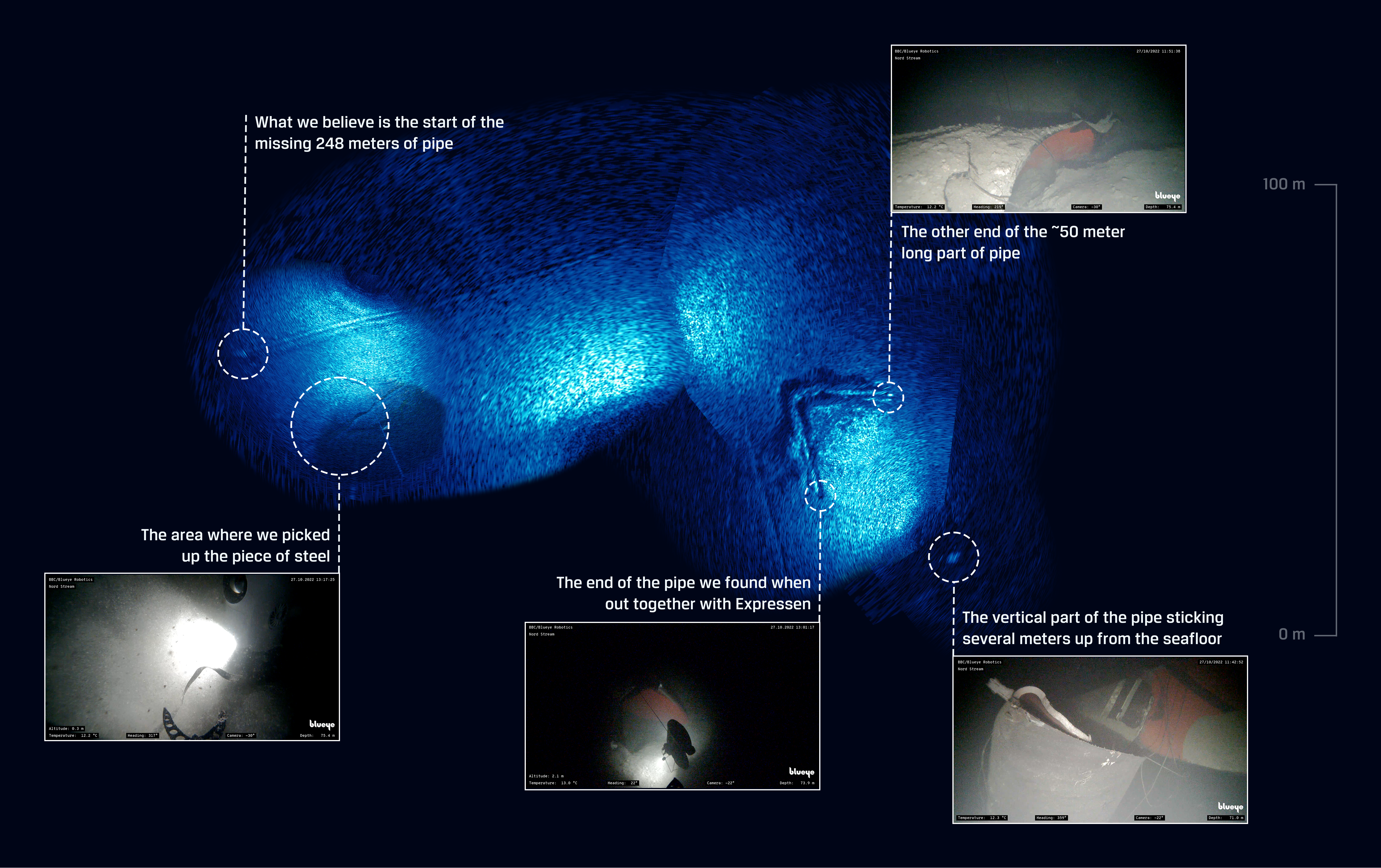
Here is a video of a rescue doll we picked up during one of our test dives. This doll is the same kind which our local fire department uses for their SAR training. We used the Blueye X3 with Reach Alpha gripper to pick up the doll. To prevent equipment damage, we suggest securing the object with a rope or similar attachment.
ROV as a tool for complex operations
Recently,the Norwegian Coast Guard successfully used their Blueye X3 ROV to locate a missing vessel at 100 meters depth and retrieve the person in the Romsdalsfjord near Molde. This showcases how advanced technology can aid in critical situations.
Military and defense teams often tackle risky tasks like dealing with explosive devices at sea or investigating suspicious objects. Such missions require meticulous planning and execution. By using underwater ROVs, they can minimize both the danger and time involved. That's why the Norwegian Coast Guard has outfitted all their fleets with the Blueye ROV!

It's a brilliant tool that we've benefited greatly from over the last few years!
- Stein Magne Eidissen, Commander at Norwegian Navy.
Moreover, the Coast Guard utilizes the ROV extensively for various missions. From inspecting foreign vessels entering Norway to resource control on vessels, the Blueye ROV proves its versatility.
We have been with the Norwegian customs during one of Norway's largest cocaine seizures. We have also found two persons who have had a fatal accident under water. The last one was a man who was out fishing and was found at a depth of a hundred meters and was actually recovered by this ROV from Blueye
- Stein Magne Eidissen, Commander at Norwegian Navy.
Using ROVs gives SAR forces a set of eyes below the surface, but for more challenging missions, the drone is also a great complementary tool. Norwegian police force uses the Blueye ROV for diverse SAR missions, while organizations like Røde Kors also rely on the Blueye ROV for their rescue and investigation activities.
Blueye X3 with sonar and gripper as a perfect tool for recovery missions
Technological advancements have made search and recovery missions much safer and more effective than ever before! The Blueye X3 with sonar enables users to see and track objects in murky water or deep areas where visibility is low. The sonar works like a special underwater radar, sending sound waves that bounce off objects and create a picture of what's around. The sonar helps them map out the underwater environment and find things that might be hard to see otherwise. It's like having an underwater detective help!
There are different sonars that can be integrated with the X3 ROV. You can read about it here.
We have had many situations where we used the X3 ROV with grippers to pick up heavy to light objects from underwater like fender for Trondheim Havn’s boat and picking up the lost aerial drone for NRK. These incidents serves as a real-world testament to the practical applications of Blueye ROVs in addressing unexpected challenges and recovery operations.
Interested in learning more about how underwater drones can support your business? Fill in the form below and our team will be in touch with you soon!

